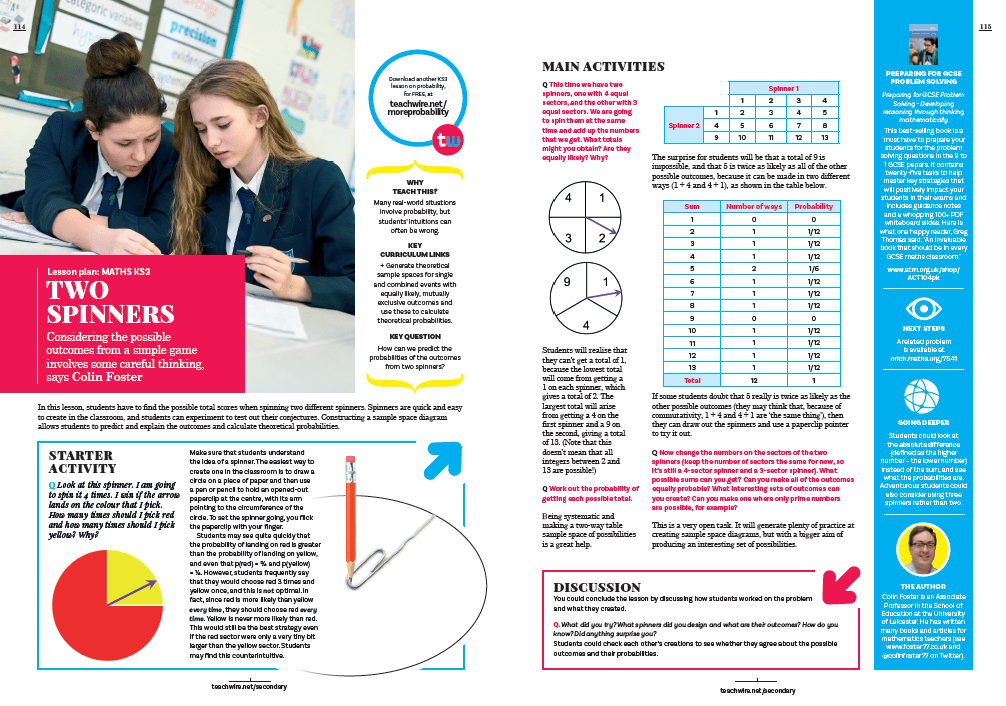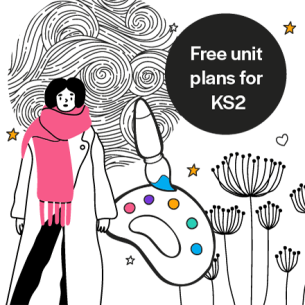In this lesson, students have to find the possible total scores when spinning two different spinners.
Spinners are quick and easy to create in the classroom, and students can experiment to test out their conjectures. Constructing a sample space diagram allows students to predict and explain the outcomes and calculate theoretical probabilities.
Why teach this?
Many real-world situations involve probability, but students’ intuitions can often be wrong.
Key curriculum links
Generate theoretical sample spaces for single and combined events with equally likely, mutually exclusive outcomes and use these to calculate theoretical probabilities.
Key question
How can we predict the probabilities of the outcomes from two spinners?

Similar resources
- Trigonometry in right-angled triangles – KS3 maths lesson plan
- Maths and science – How to embed maths in KS4 science
- Equivalent fractions – Card sort activity for KS2 / KS3 maths
- Sketching quadratic graphs – KS3 maths worksheet with answers
- Christmas maths quiz – GCSE festive relay questions (+answers)












